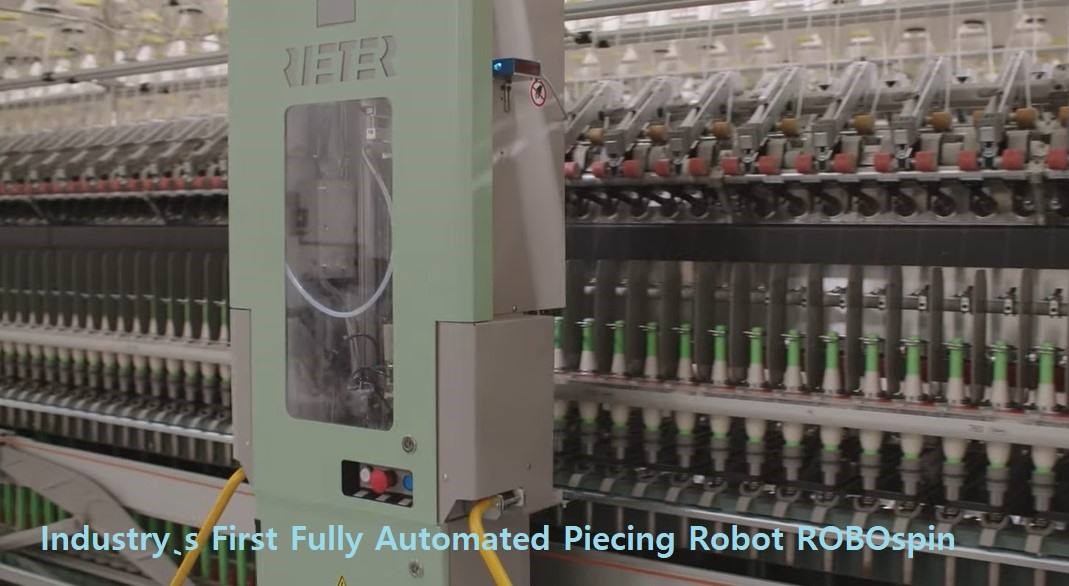.jpg)
Unlocking India’s Textile Industry to US$1 Trillion by 2035: A Vision for the Future
India’s
textile industry is one of the largest and most vibrant in the world.
Contributing over US$200 billion to the national economy and providing
employment to millions, the sector has long been a cornerstone of India’s
industrial landscape. However, the world is changing, and so must India’s
textile sector. With the global economy undergoing profound shifts - driven by
technological advancements, sustainability demands and changing consumer behaviours
- the textile industry stands at a pivotal moment.
To reach US$1
trillion in contribution to India’s economy by 2035, a bold, strategic approach
is necessary. The blueprint for this future must blend innovation,
sustainability, market expansion, and workforce development. Here’s how India
can unlock the full potential of its textile sector and set itself on a path to
achieving this audacious goal.
1.
Embrace Technological Transformation
To scale up
to US$1 trillion, India’s textile industry must harness the power of Industry
4.0 technologies - such as automation, artificial intelligence, big data, and
blockchain. These technologies are essential not only for improving
productivity and reducing costs but also for enhancing quality and
sustainability.
- - Automation and AI-driven
manufacturing
can drastically reduce labour costs and errors, streamline production
timelines, and create customized, on-demand manufacturing models. These
efficiencies would allow Indian textile manufacturers to compete with
global players while retaining the ability to quickly adapt to market changes.
- - Blockchain technology can ensure
transparency and traceability in the textile supply chain. This would
appeal to an increasingly discerning global consumer base that values
ethical production and sustainability.
- - 3D printing for textiles and smart
textiles - incorporating electronics into fabrics - can also open new
markets, especially in sectors like healthcare, defence, and sportswear.
By investing
in these technologies, India can leapfrog traditional limitations and build a
future ready textile industry capable of scaling rapidly.
2.
Establish India as the Global Hub for Sustainable Textiles
The future
of textiles is sustainable. As the world becomes more environmentally
conscious, demand for eco-friendly, ethically produced goods will only
increase. India’s textile sector can tap into this by positioning itself as a
global leader in sustainable textiles. However, this will require large-scale
investment in green technologies, resource-efficient manufacturing, and
circular economy practices.
- - Waterless dyeing, sustainable
cotton farming, and recycled fibres are just a few areas where
India can lead. With its vast agricultural base, India can focus on
producing eco-friendly fibres, such as organic cotton, hemp, and bamboo,
which have lower environmental footprints compared to conventional
materials.
- - Circularity should be at the
core of India’s textile industry strategy. Building systems that recycle
textile waste into new garments, using recycled polyester, and adopting
upcycling models can reduce waste while boosting the economy. The
government and private sectors can collaborate on incentivizing businesses
that innovate in these areas.
Moreover,
India can become the go-to supplier for sustainable fashion by aligning its
policies with international standards, securing certifications like Global
Organic Textile Standard (GOTS), and adhering to the UN Sustainable Development
Goals (SDGs).
3. Foster
Innovation and R&D in Textiles
To truly
scale, India needs to ramp up investment in research and development (R&D).
India’s textile sector must evolve from a traditional manufacturing hub to a
global center of textile innovation. The government and private sector should
partner with universities, research institutes, and startups to foster
innovation in sustainable textile technologies, new materials, and design.
India has a
massive potential to develop and manufacture bio-based fibres and fabric
innovations, like biodegradable textiles or fabrics made from algae. This
requires setting up dedicated innovation hubs and incubators that can incubate
startups and small enterprises focused on advanced textile research.
Collaborations
with global textile players, academic institutions, and innovation centres will
ensure that India remains competitive, leading the charge in the next
generation of textiles.
4. Expand
Market Access and Diversify Exports
While India
already exports textiles globally, the country’s export potential is far from
fully realized. To hit US$1 trillion, India must diversify its export markets
beyond traditional destinations like the U.S. and Europe. The rapidly growing
middle class in emerging economies - such as in Africa, Southeast Asia, and
Latin America - presents an untapped opportunity.
To increase
market share globally, India should:
- - Forge trade partnerships
with countries in Asia, Africa, and the Middle East, where textile demand
is growing due to rising disposable incomes.
- - Tap into the fast
fashion market with a focus on high-quality, low-cost garments that appeal
to younger consumers, while ensuring sustainable production practices are
maintained.
- - Increase the
presence of Made-in-India textiles at global fashion events, trade shows,
and exhibitions, showcasing India’s expertise in design and craftsmanship.
Additionally,
India must focus on higher-value segments of the textile market—such as
technical textiles, luxury textiles, and smart fabrics - which will command a
premium price and drive-up revenues.
5.
Improve Infrastructure and Supply Chain Efficiency
Scaling up
India’s textile industry to US$1 trillion will require significant improvements
in its infrastructure - particularly in logistics, supply chains, and
technology adoption. India’s textile producers must be able to quickly and
efficiently access raw materials, deliver products to global markets, and keep
pace with fast-changing consumer demands.
The Indian
government should prioritize investments in transportation infrastructure,
logistics hubs, and digital platforms that connect textile manufacturers with
global buyers. Streamlining supply chains and ensuring timely deliveries will
help India’s textile industry gain a reputation for reliability and speed,
which is critical in the competitive global market.
Creating a
digital platform to manage supply chains, track inventory, and monitor product
quality can also reduce inefficiencies and costs while enhancing transparency.
6. Invest
in Workforce Development and Skill Building
A thriving US$1
trillion textile sector must be built on a foundation of skilled labour.
India’s workforce needs to be equipped not only with traditional skills but
also with advanced technical expertise in areas such as textile machinery
operation, 3D printing, data analytics, and sustainable design.
India should
invest in vocational training and apprenticeships that provide workers with the
skills necessary to thrive in a rapidly changing industry. In collaboration
with industry leaders, the government should develop training programs that
prepare young workers for the future of textiles. This will ensure that the
sector not only grows but evolves with the times.
Moreover, it
is essential to ensure that workers are paid fair wages and treated with
dignity. As India looks to become a global leader in textiles, it must uphold
the highest standards in labour rights and ethical production.
In
conclusion, with the right investments in technology, sustainability, R&D,
market access, infrastructure, and workforce development, India can transform
its textile sector into a US$1 trillion industry by 2035. The country can lead
the world in production and set the standard for a sustainable,
innovation-driven, and ethically conscious textile industry.
Achieving
this goal will require visionary leadership, bold policy reforms, and deep
collaboration between the government, industry players, and global partners.
India’s textile sector can be a true symbol of economic growth and
environmental stewardship - woven together for a brighter, more sustainable
future.
(Manmohan Parkash is a former Senior
Advisor, Office of the President, and Deputy Director General, South Asia,
Asian Development Bank. The views expressed are personal.)
Achieving the goal of a trillion dollar Textile Industry will require visionary leadership, bold policy reforms, and deep collaboration between the government, industry players, and global partners. India’s textile sector can be a true symbol of economic growth and environmental stewardship—woven together for a brighter, more sustainable future.
If you wish to Subscribe to Textile Excellence Print Edition, kindly fill in the below form and we shall get back to you with details.








